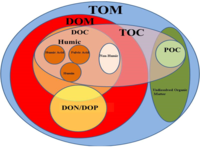
Photo from wikipedia
Microclimatic data is required for many problems in pure and applied ecology. This data includes above-ground convective and radiative conditions as well as soil temperature and moisture. In cold regions,… Click to show full abstract
Microclimatic data is required for many problems in pure and applied ecology. This data includes above-ground convective and radiative conditions as well as soil temperature and moisture. In cold regions, the connection between above- and below-ground microclimates via snow cover is also critically important. Here I describe a data set of hourly microclimates for continental USA, simulated from the years 1979 to 2017 across a grid of 2287 locations approximately 60 km apart. The data were generated with the NicheMapR microclimate model, driven by 0.04° gridded daily meteorological forcing data (air temperature, wind speed, humidity, solar radiation, air pressure and rainfall). The above-ground microclimate variables include horizontal plane solar radiation, solar zenith angle, sky temperature (from which down-welling longwave radiation can be computed), air temperature, relative humidity and wind speed at 1 and 200 cm height, and snow depth. The below-ground variables include soil temperature, pore humidity, soil moisture and soil water potential for 0, 2.5, 5, 10, 15, 20, 30, 50, 100, and 200 cm below-ground. The computations are for four shade levels (0%, 50%, 75% and 90%). The predictions are validated against detailed soil temperature, soil moisture and snow observations and show enhanced performance over existing microclimatic data for the USA. The data set can be used for a wide variety of applications, including the computation of heat and water budgets of organisms, the potential for vegetation growth, and the computation of stress and growth indices. The use of daily forcing data also allows assessments of the consequences of extreme events including heat waves and drought. Example applications are provided for computing plant growth potential, lizard egg development and body temperature, and mammalian energy and water requirements. No copyright or proprietary restrictions are associated with the use of this data set other than citation of this Data Paper. This article is protected by copyright. All rights reserved.
Journal Title: Ecology
Year Published: 2019
Link to full text (if available)
Share on Social Media: Sign Up to like & get
recommendations!